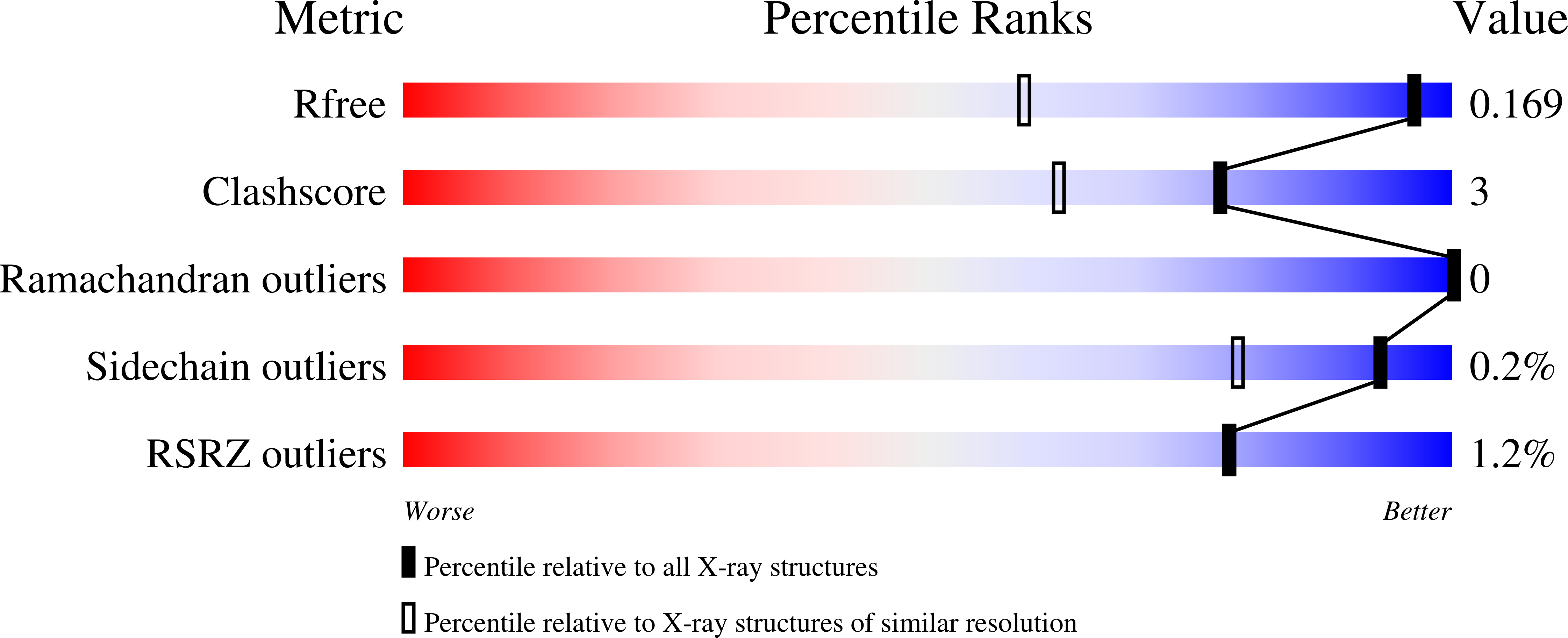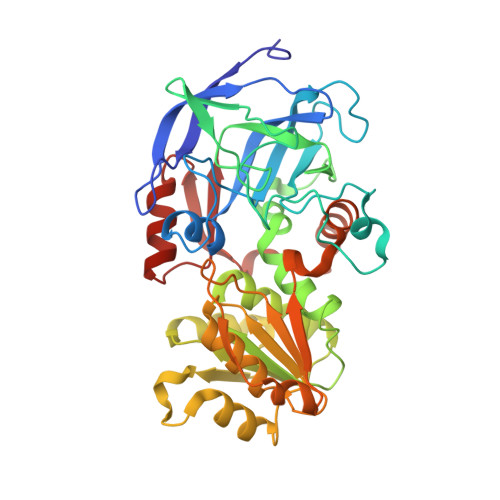Origins of the high catalytic activity of human alcohol dehydrogenase 4 studied with horse liver A317C alcohol dehydrogenase.
Herdendorf, T.J., Plapp, B.V.(2011) Chem Biol Interact 191: 42-47
- PubMed: 21184752
- DOI: https://doi.org/10.1016/j.cbi.2010.12.015
- Primary Citation of Related Structures:
3OQ6 - PubMed Abstract:
The turnover numbers and other kinetic constants for human alcohol dehydrogenase (ADH) 4 ("stomach" isoenzyme) are substantially larger (10-100-fold) than those for human class I and horse liver alcohol dehydrogenases. Comparison of the primary amino acid sequences (69% identity) and tertiary structures of these enzymes led to the suggestion that residue 317, which makes a hydrogen bond with the nicotinamide amide nitrogen of the coenzyme, may account for these differences. Ala-317 in the class I enzymes is substituted with Cys in human ADH4, and locally different conformations of the peptide backbones could affect coenzyme binding. This hypothesis was tested by making the A317C substitution in horse liver ADH1E and comparisons to the wild-type ADH1E. The steady-state kinetic constants for the oxidation of benzyl alcohol and the reduction of benzaldehyde catalyzed by the A317C enzyme were very similar (up to about 2-fold differences) to those for the wild-type enzyme. Transient kinetics showed that the rate constants for binding of NAD(+) and NADH were also similar. Transient reaction data were fitted to the full Ordered Bi Bi mechanism and showed that the rate constants for hydride transfer decreased by about 2.8-fold with the A317C substitution. The structure of A317C ADH1E complexed with NAD(+) and 2,3,4,5,6-pentafluorobenzyl alcohol at 1.2 ? resolution is essentially identical to the structure of the wild-type enzyme, except near residue 317 where the additional sulfhydryl group displaces a water molecule that is present in the wild-type enzyme. ADH is adaptable and can tolerate internal substitutions, but the protein dynamics apparently are affected, as reflected in rates of hydride transfer. The A317C substitution is not solely responsible for the larger kinetic constants in human ADH4; thus, the differences in catalytic activity must arise from one or more of the other hundred substitutions in the enzyme.
Organizational Affiliation:
Department of Biochemistry, The University of Iowa, Iowa City, IA 52242-1109, USA.




















